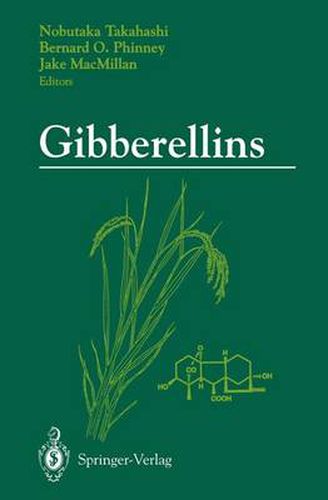Readings Newsletter
Become a Readings Member to make your shopping experience even easier.
Sign in or sign up for free!
You’re not far away from qualifying for FREE standard shipping within Australia
You’ve qualified for FREE standard shipping within Australia
The cart is loading…






This title is printed to order. This book may have been self-published. If so, we cannot guarantee the quality of the content. In the main most books will have gone through the editing process however some may not. We therefore suggest that you be aware of this before ordering this book. If in doubt check either the author or publisher’s details as we are unable to accept any returns unless they are faulty. Please contact us if you have any questions.
The cultivation of rice in Japan has suffered from damage caused by baka nae disease, in which rice seedlings show abnormal growth (elongation) as the result of infection by a plant pathogen. Investigation of the taxonomy of this pathogen led to the commencement of gibberellin (GA) research among Japanese plant pathologists, who later identified it as Gibberella jujikuroi, its other name being Fusarium moniliforme. In 1926, Kurosawa demon strated the occurrence of an active principle in the culture media of fungus that showed the same symptoms as those of the rice disease. In 1938, this finding was followed by the successful isolation of the active principles as crystals from the culture filtrate. This was achieved by the Japanese agri cultural chemists Yabuta and Sumiki, of The University of Tokyo, who named these active principles gibberellins A and B. Following World War II, this discovery attracted the interest of scientists around the world, and research on GA was pursued on a worldwide scale. One of the most outstanding discoveries in GA research after the isolation of GA as the metabolite of the plant pathogen must be the isolation and characterization of GAs from tissues of higher plants by the MacMillan group, West and Phinney, and the Tokyo University group in 1958 and 1959. Thus, GAs have been recognized as one of the most important classes of plant hormones.
$9.00 standard shipping within Australia
FREE standard shipping within Australia for orders over $100.00
Express & International shipping calculated at checkout
This title is printed to order. This book may have been self-published. If so, we cannot guarantee the quality of the content. In the main most books will have gone through the editing process however some may not. We therefore suggest that you be aware of this before ordering this book. If in doubt check either the author or publisher’s details as we are unable to accept any returns unless they are faulty. Please contact us if you have any questions.
The cultivation of rice in Japan has suffered from damage caused by baka nae disease, in which rice seedlings show abnormal growth (elongation) as the result of infection by a plant pathogen. Investigation of the taxonomy of this pathogen led to the commencement of gibberellin (GA) research among Japanese plant pathologists, who later identified it as Gibberella jujikuroi, its other name being Fusarium moniliforme. In 1926, Kurosawa demon strated the occurrence of an active principle in the culture media of fungus that showed the same symptoms as those of the rice disease. In 1938, this finding was followed by the successful isolation of the active principles as crystals from the culture filtrate. This was achieved by the Japanese agri cultural chemists Yabuta and Sumiki, of The University of Tokyo, who named these active principles gibberellins A and B. Following World War II, this discovery attracted the interest of scientists around the world, and research on GA was pursued on a worldwide scale. One of the most outstanding discoveries in GA research after the isolation of GA as the metabolite of the plant pathogen must be the isolation and characterization of GAs from tissues of higher plants by the MacMillan group, West and Phinney, and the Tokyo University group in 1958 and 1959. Thus, GAs have been recognized as one of the most important classes of plant hormones.